Watercolors
home | selected watercolors from period 1984-1999 | seascapes | mountains in watercolor | The Lifeboat, winner of The Paul Schwartz Memorial Award, AWS New York | a new way of painting light | paintings inspired by history, science, math | drawings | London in watercolor | seascapes 2 | watercolor responses to the australian landscape | awards | art links | contact | featured watercolors - various subjects | watercolors for sale | 'visual language' theory
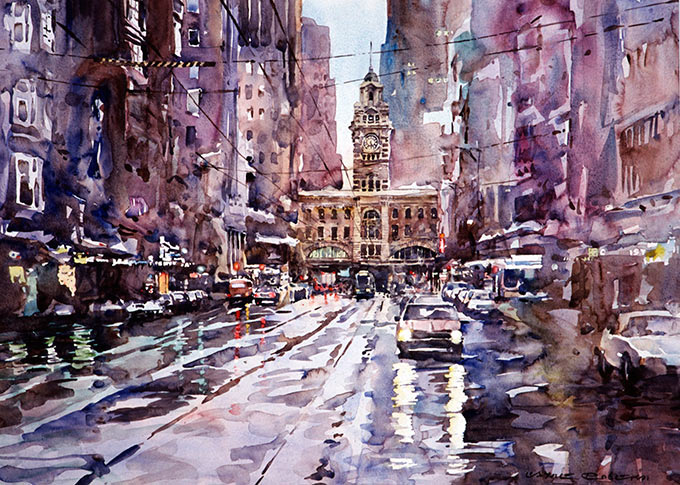
Flinders Street Melbourne
transparent watercolor on Montval paper, 56 x 76cm, private collection
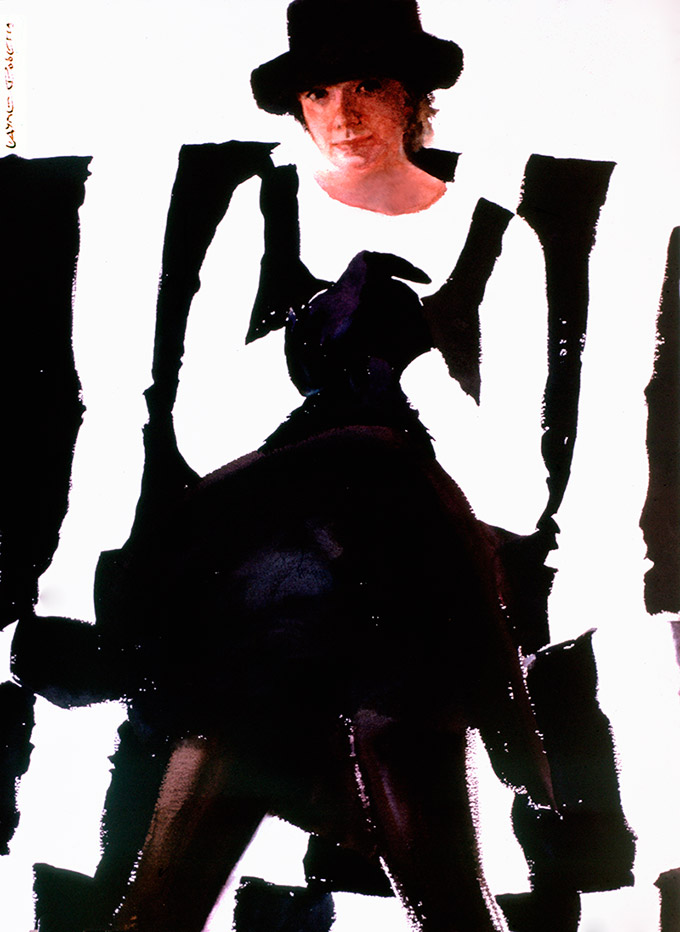
Linda on Stripes
transparent watercolor on Arches 640gsm cold-pressed paper, 82cm x 60cm
collection G Simeral and P Gegax
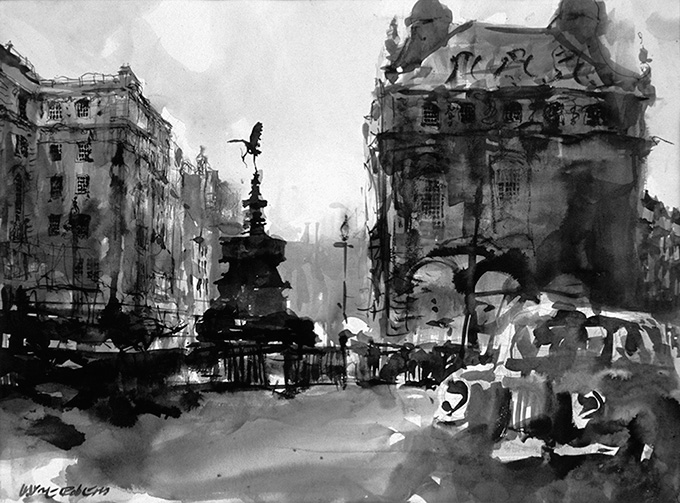
Piccadilly
charcoal, india ink, sumi ink and graphite stick on hot-pressed paper, 56cm x 76cm
private collection
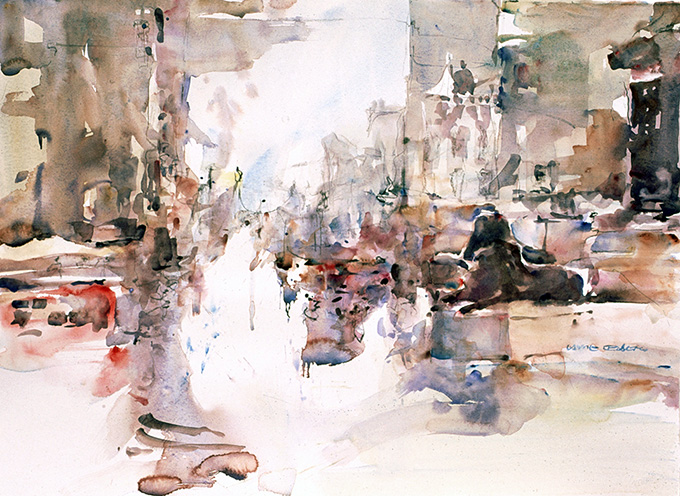
Trafalgar Square
watercolour, graphite stick, augmented with willow-stick charcoal on hot-pressed paper
private collection

Dinan, France
watercolor on Lanaquarelle 300gsm cold-pressed paper, 56cm x 76cm
private collection
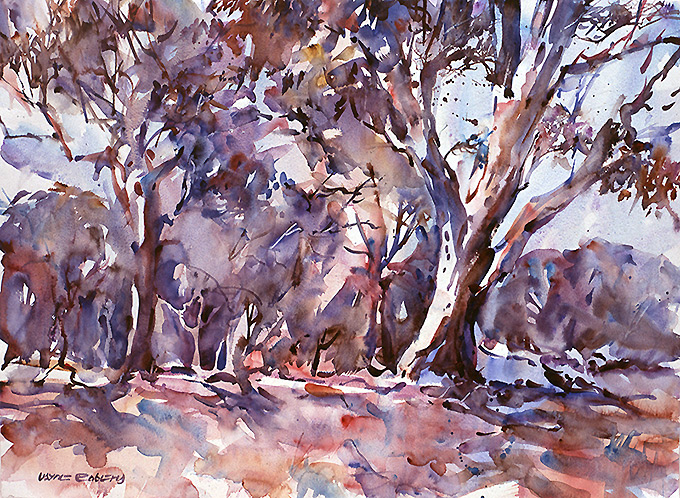
Eucalypts
transparent watercolour on 300gsm cold-pressed paper, 56cm x 76cm
private collection
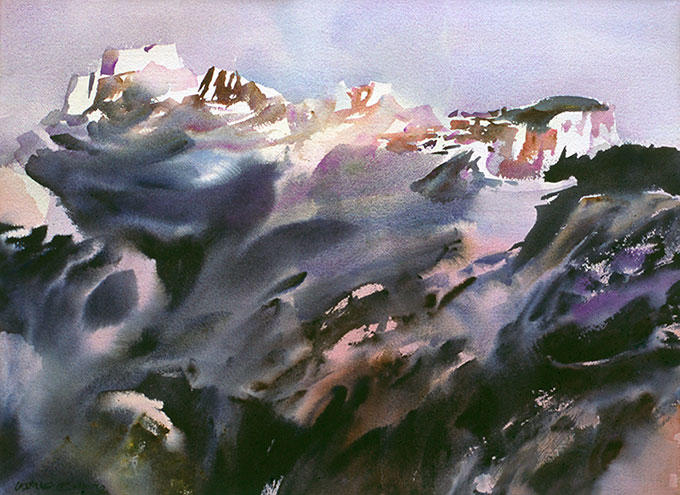
Les Baux de Provence
transparent watercolor on Arches 640gsm torchon paper, 56cm x 76cm
private collection
A background in watercolor...
I began drawing watercolors around 25 years ago in my teens. A book that particularly inspired me was by the late American watercolorist Ted Kautzky. His unusually dramatic use of the medium, especially his seascapes captured my young eye. Other books on watercolor that inspired my first steps in the medium were by Lee Weiss, and Barbara Nechis.
Challenges of the watercolor medium
The transparency of the medium means that, unlike oil painting where weak areas may be over-painted, the watercolorist has no such luxury. Virtually every brushstroke is visible in the final work, and this is one of its great challenges.
Secondly, in the transparent use of the medium, opaque colours such as white are not used. Rather, the white in watercolors is simply the color of the paper itself showing through. In this sense, watercolor is akin to sculpture: the artist sculpts away parts of the white of the paper with the colors and has to paint the darker values or tones surrounding the light. Once an area of white paper is over-painted in color, that's it. There is no going back.
Thirdly, watercolor flows. When the paper is wet, if one color touches another, they intermix on the paper in a somewhat unpredictable way. This creates fantastic nonlinear patterns, but also problems for the watercolor portrait artist, who may need to control value transitions around facial features. When you add to this, the fact that wet paper is constantly in a dynamic state of becoming drier, another level of difficulty arises: timing.
Timing is of an essence in the medium. Frequently, action at a particular moment is called for, and all the parameters mentioned above have to be in sync: placement, color choice, value, degree of dampness of brush in relation to wetness of paper surface. It is this wet-in-wet aspect that makes such painting unrepeatable. Uncopyable in exact character and detail because of these nonlinear happenings which are the hallmark and charm of the medium.
Wayne Roberts
All images © copyright 1992 - 2000 Wayne Roberts. All rights reserved.
top of page | language of lines -art | awards | links | contact | direct email quicklink
